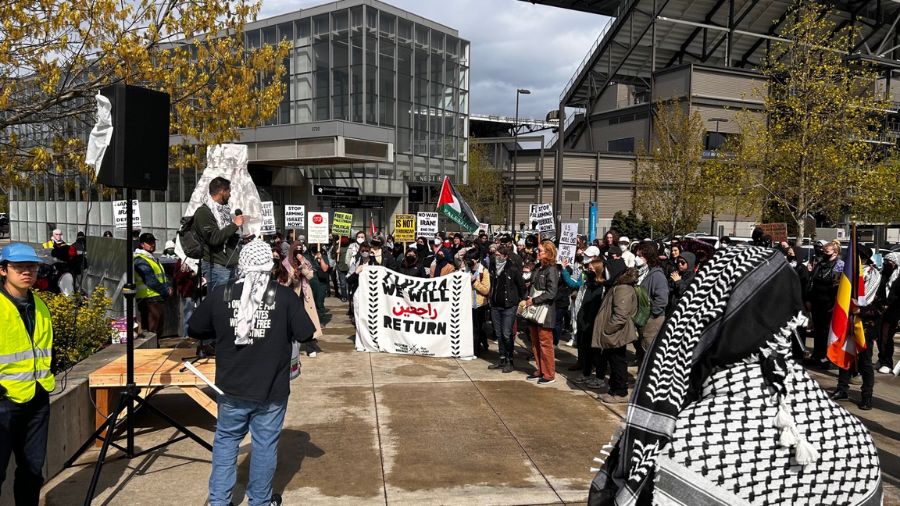How Seattle plans to ‘right-size’ its 911 response to use police less
Jul 10, 2020, 3:23 PM | Updated: Jul 13, 2020, 10:20 am

Police officers behind a barricade watch as protesters fill the street in front of Seattle City Hall on Wednesday, June 3. (AP Photo/Elaine Thompson)
(AP Photo/Elaine Thompson)
A new bill from Councilmember Andrew Lewis looks to change how the city responds to 911 calls. Lewis stopped by Seattle’s Morning News to discuss the measure, and how it might look compared to similar programs in the United States.
Seattle councilmember unveils bill to reshape 911 services
The proposal is based on a similar program established in 1989 in Eugene, Oregon, known as the Crisis Assistance Helping Out on the Streets (CAHOOTS). Eugene’s service is composed of unarmed medics and mental health workers dispatched by 911, and offering counseling, conflict resolution, housing referrals, first aid, and transport to further services.
Lewis hopes to use that system as a guide to similarly overhaul Seattle’s emergency response services.
“When there’s a building on fire, we don’t send the police — we send the fire department,” he pointed out. “When someone has a stroke or heart attack, we send an EMT. We don’t send a police officer.”
More than that, he views it as a “right-sizing” of Seattle’s 911 system, ensuring that each responder is performing the task they’re uniquely qualified for.
“This is just adding another leg of the stool of our first response, and it’s making sure that we can free up our officers to respond to the things we need them to respond to,” he added, noting that police would still be responding to violent incidents, which have traditionally composed a small slice of 911 calls.
Eugene’s CAHOOTS service responds to roughly 20% of all 911 calls, totaling 24,000 calls in 2019 alone, and requiring police assistance just a handful of times.
“They only called in the police for backup 150 times,” Lewis said. “They would successfully deescalate the situation and get the person the assistance that they needed.”
That all being so, Councilmember Lewis emphasized that while CAHOOTS is a good success story, Seattle is also a much different city than Eugene, both in terms of its total population and demographics.
Opinion: No more reform — it’s time to rebuild Seattle policing
Eugene houses just over 171,000 residents, while Seattle has over 783,000 people living inside its city limits. The county Eugene resides in is also roughly 90% white.
“I think it’s important to note that CAHOOTS is a template, and every city that’s adopted it has kind of made it their own and put in their own considerations unique to their community,” Lewis noted. “We want to make sure that we’re creating a model that is responsive, and is informed by the lived experience of community members here.”
Lewis’ bill is part of a larger proposal from Decriminalize Seattle and King County Equity Now to dramatically reshape Seattle’s police department, including a goal to cut SPD’s funding by 50%. As of publishing, seven of nine councilmembers — including Lewis — have expressed support for that plan.













